Costa Rica is literally a tropical paradise. Home to around 5 percent of the entire planet's biodiversity, much of the country is covered by lush rainforests and beautiful cloud forests. But what are the differences between the two?
I'm something of an expert when it comes to the forests in Costa Rica, so come with me to find out!
Let's start with both definitions and a photo from each:
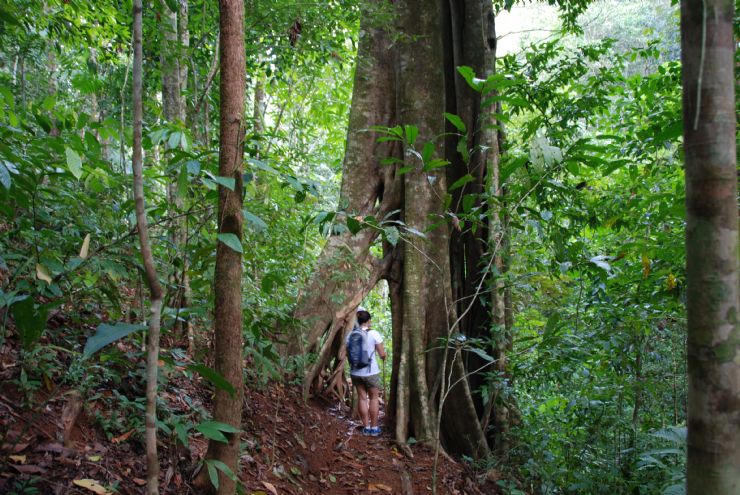
Rainforest hike in Matapalo next to a Strangler Fig Tree
Rainforest
A rainforest is a tropical forest with an annual rainfall of 100 inches of more with trees forming a canopy. There are numerous numbers of epiphytes (a plant that grows on another plant but it is not a parasitic) on the trees.
In Costa Rica the rainforest is typically on the coast or in lower elevation and it is teaming with animals.
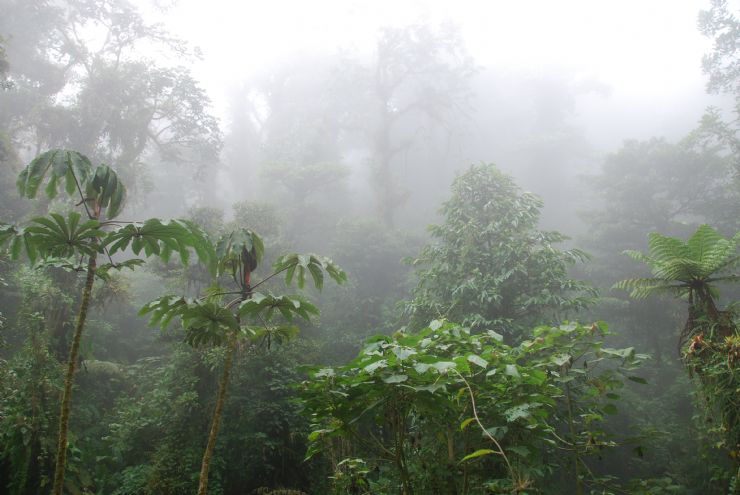
Monteverde Cloud Forest in the clouds
Cloud Forest
A cloud forest is a type of rainforest but the altitude is usually much higher, somewhere in the range of 3,000 to 8,000 feet. There is an overwhelming number of epiphytes among all the larger trees.
If you look up it is hard to see the sky through the canopy of trees fighting for the light. It is almost always misty, thus the name cloud forest as it looks like you are in a cloud.
.jpg)
Waterfall at Monteverde Cloud Forest Biological Reserve
7 Days / 6 Nights
Starting at $779 per person
Elevation
One of the key differences between cloud forests and rainforests has to do with the elevation of the forest itself - that means how high it is above sea level.
Rainforests are located at lower elevations, and as a result, they tend to be much warmer, especially during the dry season.
Cloud forests, on the other hand, are usually located at much higher elevations, and are much cooler. This difference in temperature contributes to the mist and fog that is often visible in cloud forests, as the milder temperatures slow the evaporation process. However, despite being a little cooler than rainforests, cloud forests are very humid.
Both have a ton of animals but the animals vary in each type of forest.
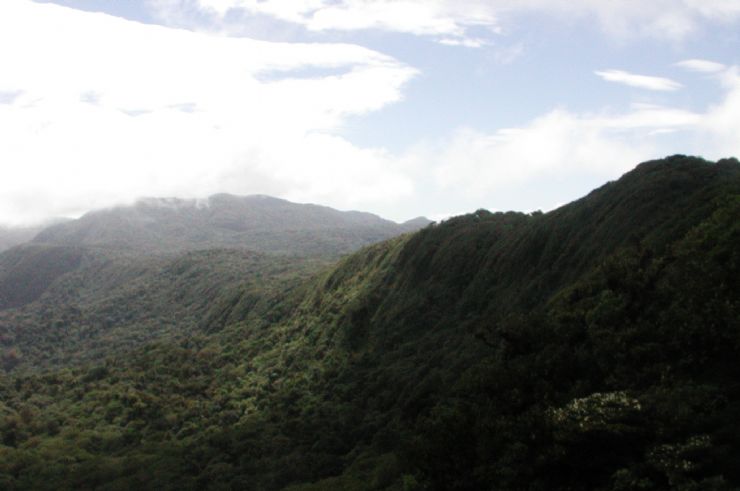
Looking over the canopy of Monteverde Cloudforest
Topography
Elevation isn't the only factor that separates cloud forests from rainforests. The lay of the land, also known as the topography, plays a crucial role in defining the microclimates of these beautiful forests.
Rainforests tend to cover large expanses of land with little change in elevation, providing consistent conditions in terms of temperature, humidity and precipitation.
Cloud forests, on the other hand, often feature dramatic shifts between the highest peaks and the lowest valleys, contributing to the accumulation of rainwater and atmospheric moisture.
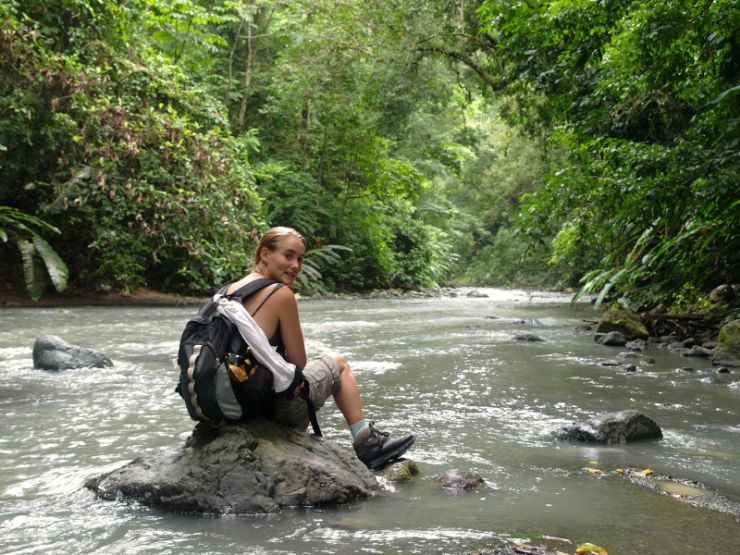
Hiker sitting on rock in river at Corcovado National Park
Rivers
Another key difference between cloud forests and rainforests is the type of rivers that flow through them.
Rainforests tend to have larger, slower rivers with heavy silt beds, while the rivers of cloud forests tend to be faster, shallower and clearer with rocky beds. The moisture that comes from the rivers, combined with the higher altitude, creates additional condensation that leads to the formation of the fog and mist that make cloud forests so beautiful.
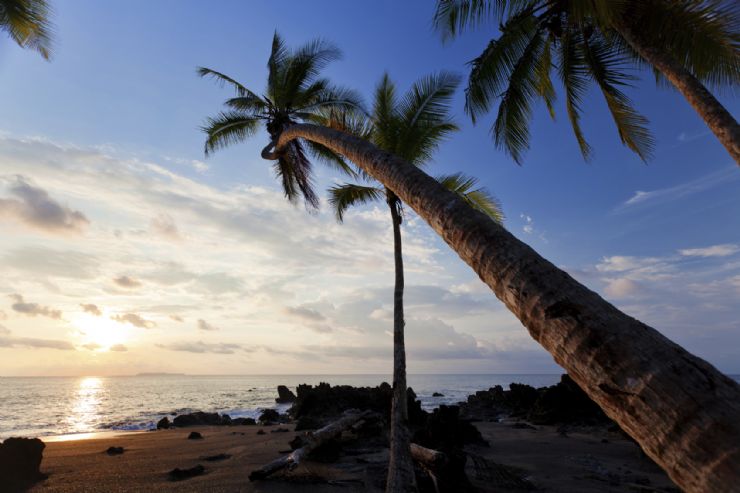
Sunset over the rainforest at Corcovado National Park
Finding Lush Jungles in Costa Rica
When it comes to visiting these lush jungles, it doesn't really matter if you choose to spend time in a cloud forest or a rainforest - Costa Rica has plenty of both!
If you want to see the beauty of a cloud forest for yourself, head to the Monteverde Cloud Forest Biological Reserve or Santa Elena Cloud Forest Reserve, which spans the provinces of north Puntarenas and Alajuela.
Alternatively, for a rainforest adventure, head to either Tortuguero National Park, Manuel Antonio National Park or Corcovado National Park

